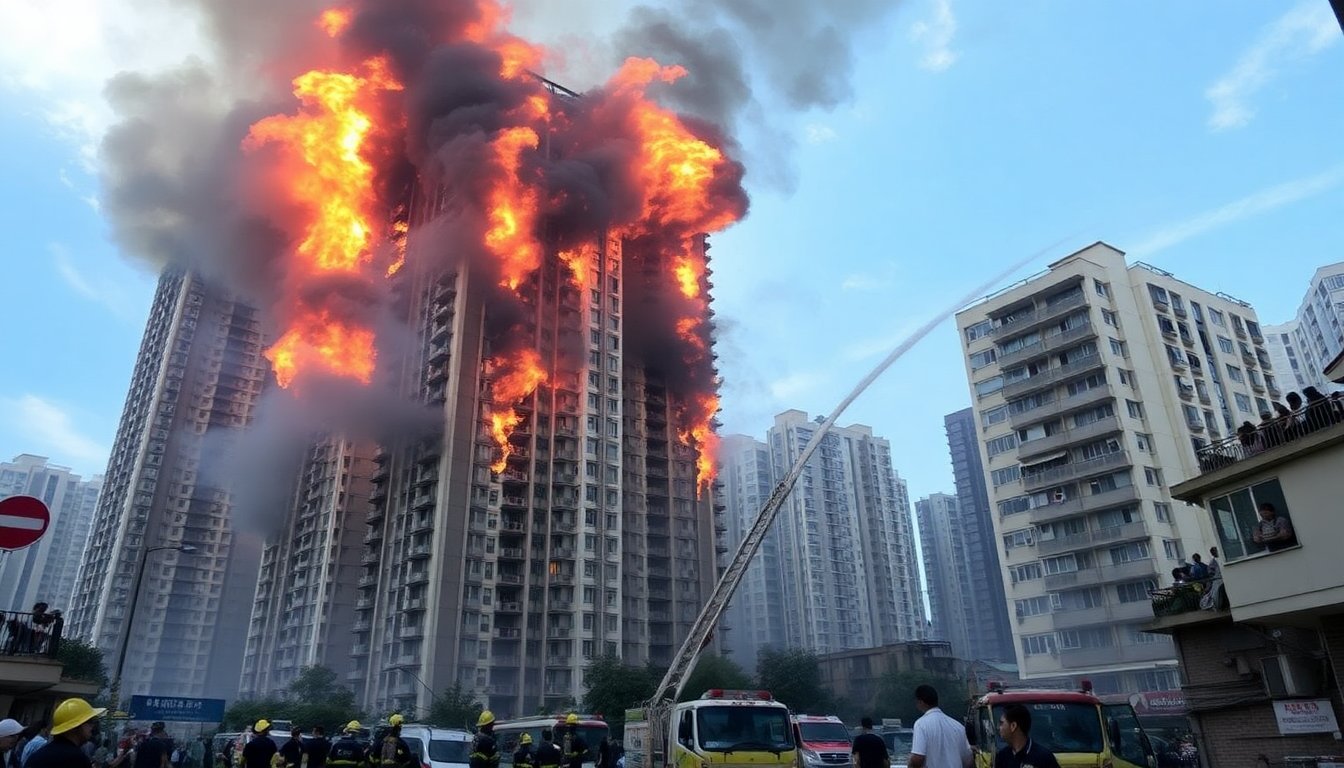Table of Contents
On a Wednesday afternoon, a devastating fire broke out in a housing complex in the Tai Po district of Hong Kong, resulting in a tragic loss of life and numerous injuries. Reports confirm that at least 13 individuals have died, with the fire causing chaos and prompting the evacuation of hundreds of residents. Eyewitness accounts and local fire services describe a harrowing scene as flames engulf multiple high-rise buildings.
The Wang Fuk Court housing complex, established in 1983, accommodates approximately 4,800 residents across its eight blocks. As the fire spread rapidly through the complex, it reached a Level 5 alarm status, indicating the utmost severity of the situation. The incident has raised concerns over safety practices in the region, particularly regarding the use of bamboo scaffolding, which has drawn scrutiny due to its safety risks.
The incident unfolds
Witnesses reported that the fire ignited late in the afternoon, quickly escalating in intensity. Initial investigations suggest the blaze began on the external scaffolding of one of the buildings before making its way inside, fueled by strong winds. Emergency services received numerous distress calls from residents, many of whom struggled to escape the rapidly spreading flames.
As night fell, the sky was illuminated by the bright orange flames and thick black smoke billowing from the buildings. Firefighters faced significant challenges, with over 128 fire trucks and 57 ambulances deployed to the scene. Rescue operations were complicated by high temperatures and falling debris, as noted by Derek Armstrong Chan, Deputy Director of Fire Services.
Challenges faced by emergency responders
The conditions within the affected buildings were extreme, complicating the firefighters’ efforts. The intense heat and presence of falling debris hindered access to upper floors for rescue operations. Reports indicated that some residents remained trapped as emergency services worked into the night.
Among the casualties was a firefighter who tragically lost his life while attempting to save others. Another firefighter received treatment for heat exhaustion, illustrating the physical toll the blaze took on responders. The community has united, with around 700 residents evacuated to temporary shelters as they await news about their homes and loved ones.
Community impact and response
The emotional toll of the incident resonated deeply within the community, particularly among those who witnessed the destruction of their homes. One resident, identified only by the surname Wu, expressed his frustration as he watched his property engulfed in flames. “I’ve given up thinking about my belongings,” he shared with local media, highlighting the anguish many felt as they grappled with the devastation.
Local authorities, including Tai Po District Council member Lo Hiu-fung, indicated that many of those trapped were elderly residents, intensifying the urgency of the rescue efforts. The community’s fears were palpable as families awaited news of their loved ones, many of whom were unable to escape the flames in time.
Reflection on safety measures
This tragic event has reignited discussions surrounding the safety of construction practices in Hong Kong, particularly the use of bamboo scaffolding. Despite its historical prevalence in the region, the government had announced plans to phase out its use for public projects due to safety concerns earlier this year. The incident has sparked calls for a re-evaluation of existing safety regulations to prevent such tragedies from reoccurring.
As investigations continue into the cause of the fire, the community mourns its losses and begins the process of recovery. The aftermath of this disaster is likely to lead to significant changes in safety protocols and emergency response strategies in Hong Kong, as officials work to ensure the well-being of its residents.


